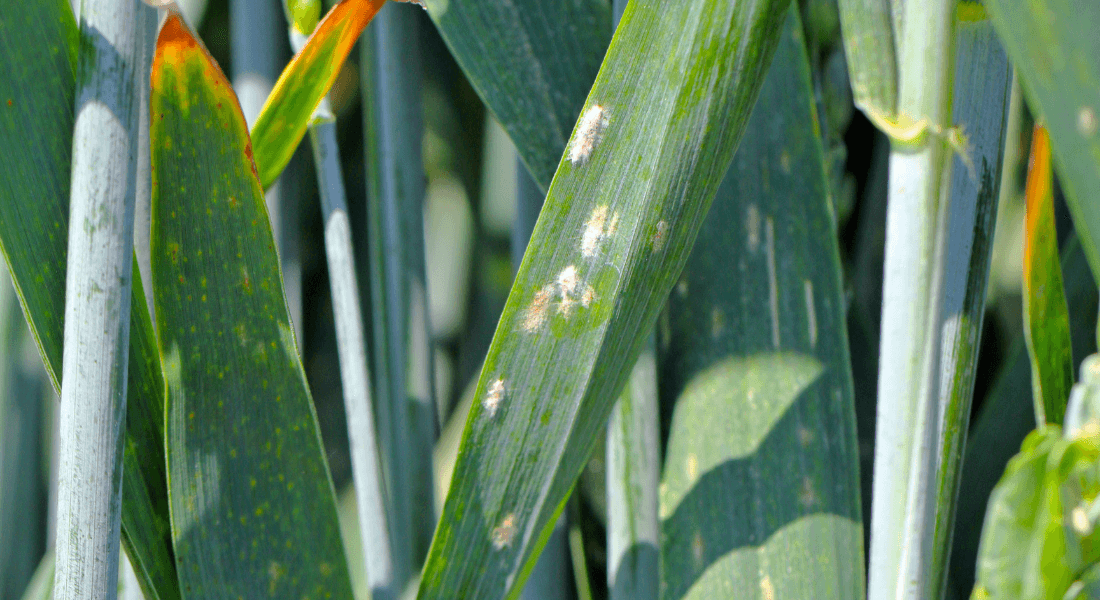PhD defence by Xuan Li

Two Barley Powdery Mildew Effectors Target ESCRT-related Proteins to Manipulate Plant Immunity
Barley powdery mildew disease caused by the obligate biotrophic fungal pathogen Blumeria hordei (Bh) causes severe yield loss of barley globally. Bh secretes a large number of CSEPs (for ‘candidates for secreted effector proteins’) to manipulate the plant immune system in order to promote its pathogenicity. A few CSEPs and their target proteins in plant cells have been studied previously, yet the functions and targets of most CSEPs remain unclear. In this study, I identified CSEP0099 and CSEP0219 that can suppress plant immune responses and target ESCRT-related proteins in barley. Callose deposition and ROS burst are both important PTI responses. Thirty-seven CSEPs were initially screened for their ability to suppress bacteria- triggered callose deposition. Subsequently, nine callose deposition-suppressing CSEPs were screened again for their ability to suppress ROS generation. Eight CSEPs can suppress both callose deposition and ROS burst. Classical Y2H screening was performed to identify potential interactors of four PTI-suppressing CSEPs. CSEP0099 and CSEP0219 target ESCRT-related proteins HvCHMP1 (for ‘charged multivesicular body protein 1’) and HvSINAs (for ‘seven in absentia’), respectively. Overexpression of CSEP0099 or CSEP0219 could increase the penetration rate of Bh, suppress HR in incompatible barley- Bh interactions, and block transport of the vacuolar marker (SP)-RFP-AFVY. HvCHMP1 is a Snf7 family protein and an accessory protein of the ESCRT machinery. CHMP1, also known as SAL1, have been previously described to play an important role in endosomal sorting. In barley epidermal cells, mYFP-tagged HvCHMP1 was observed in punctate structures of different sizes and the ER. Overexpression of HvCHMP1 causes a block of the vacuolar pathway. HvSINAs are SINA- type E3 ubiquitin ligases. In Arabidopsis, SINATs (for ‘seven in absentia of Arabidopsis thaliana’) are reported to mediate ubiquitination and degradation of ATG proteins and ESCRT-I components, FREE1 and VPS23A. HvSINA6 tagged with mYFP or mCherry was observed in punctate structures. HvSINA6 tends to form aggregates, and the formation of HvSINA6 aggregates is reduced when CSEP0219 is co-expressed. CSEP0219 also interacts with the Arabidopsis SINATs in yeast. Attempts were made to study if CSEP0219 affects SINATs’ function to ubiquitinate and degrade FREE1 and if SINATs play any general roles in plant immunity.
Assessment Committee
Senior Lecturer Laurence Bindschedler, Royal Holloway University of London, UK Associate Professor Kim Hebelstrup, University of Aarhus, Denmark
Professor David B. Collinge (Chair), PLEN, University of Copenhagen, DK
Supervisors
Professor Hans Thordal-Christensen, PLEN, University of Copenhagen, Denmark
The defence is followed by a reception in meeting room R322/23 on 3rd floor
Everybody is welcome
